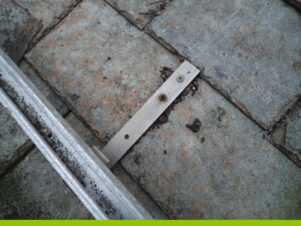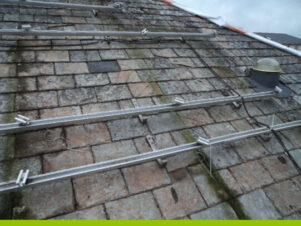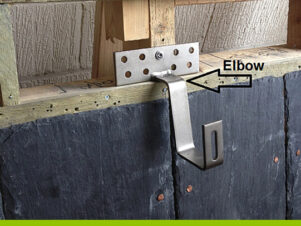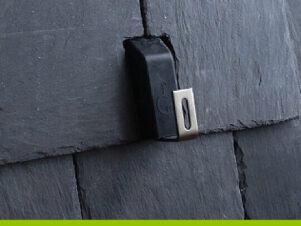What not to do when installing solar on your roof
TextBefore installing solar you must read this:
On this page we show you what not to do when installing solar on your roof and the best way of installing solar on your roof using SolarFlash®.
Solar installations have been taking place in the UK for over 10 years. There are many good professional solar installers out there but there are also those that have not treated the roof with the care it requires.
Thankfully over the years new equipment has been designed to arm the installers with the equipment and tools required to do the job right.
The organisation; Microgeneration Certification Scheme (MCS) is a nationally recognised quality assurance scheme, supported by the Department of Energy and Climate Change. MCS certifies micro-generation technologies used to produce electricity and heat from renewable sources. This organisation has helped to raise the standards of installations in the industry.
However for those that have had solar installed by persons without the right skills and/or equipment they may find that their installation will be causing them some problems in time to come, if they haven’t already.
The problem we are starting to see more and more in the industry is with leaking roofs. Some installation practices, especially in the early days of solar included drilling through the roofing material. After drilling through the roofing material, silicone or sealant would be used to seal around the screws.
In some cases if slates or tiles were broken during the install, again sealants and silicone would be used to mend the slate/tile. Use of sealants and silicones for these purposes is not sufficient and it is not a professional job. Over time they are likely to breakdown and allow water to enter the roof.
We don’t agree with these practices:
- Drilling through the roofing material
- Using any type of silicone or sealant as a means to ‘weather proof’ a roof
- Allow anything to rest on the roofing material, making it load bearing
Issues associated with drilling through slates and tiles
- The section that has been drilled, either immediately or over time will allow water to seep through. Even if a sealant, silicone or washer is used, these are not adequate to keep the water out.
- When drilling through slates and tiles, you may crack them. Slates are particularly brittle, you could crack the top course of slates you are working on/drilling through OR the course underneath that you can’t see or access.
Examples of what not to do when installing solar

Drilling through slate
The slate has been drilled through. The slates underneath, aren’t visible so you can’t tell if they have been broken.
A sealant used to water tight the screw/drilled holes is not a long term fix.

Bracket resting on slate
In this instance the slate has been removed and so the bracket can be attached to the rafter, which is good.
However the bracket is resting on the slate, meaning any movement in the panel/bracket could break the
slates underneath.
Doing It Right

We always recommend that a bracket with an elbow is used so the bracket does not rest on the roofing material when installing solar.

There is a solution! Do it right with SolarFlash®
Installing solar panels with a mounting system which incorporates the SolarFlash®, means:
- There is no drilling through the roofing material
- The roofing material is not load bearing
- The roofs weather tightness is not compromised by the solar installation
- Can help ensure that your installation is MCS compliant